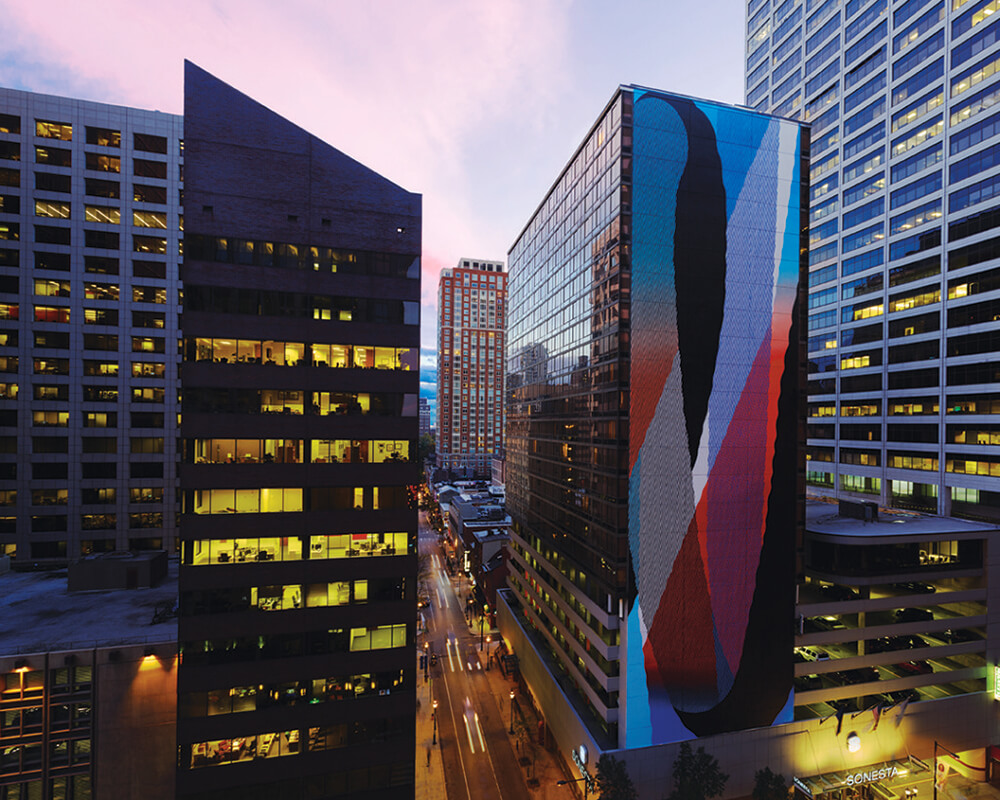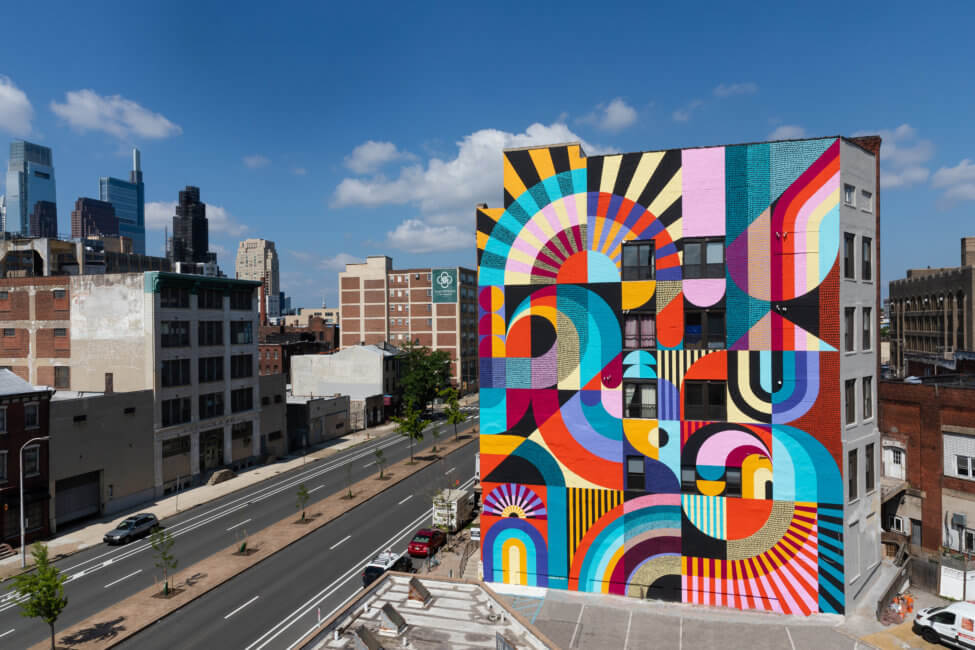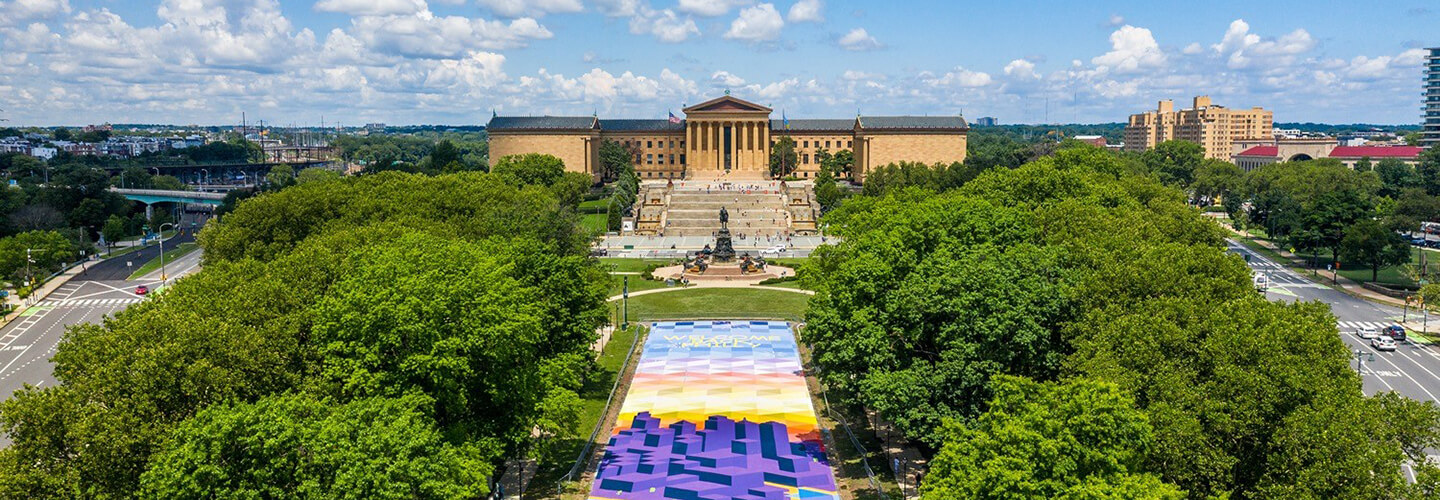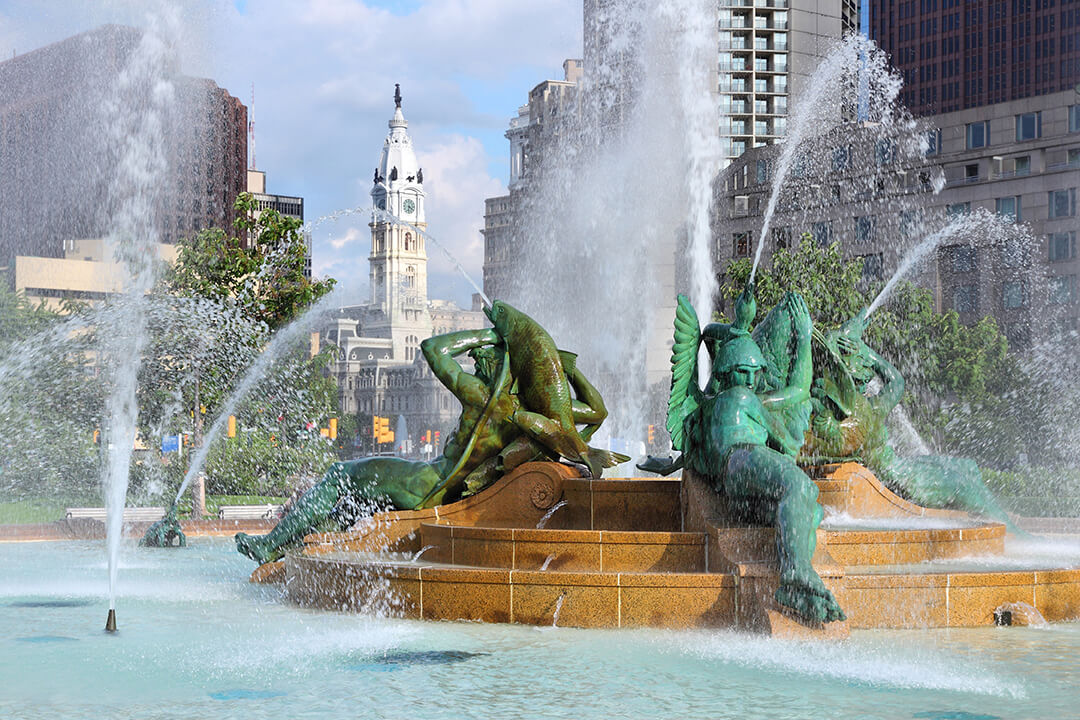
Art is everywhere in Philadelphia.
And there are thousands of pieces to admire outdoors, thanks in part to Philadelphia’s efforts to make art accessible for all. Stroll through Philadelphia to see the mosaics, murals, sculptures, and street art that make up the city’s public art gallery.
Iconic Philadelphia Art
There are many iconic pieces of art worth seeing while visiting Philadelphia. No trip to the city is complete without a selfie in front of Robert Indiana’s LOVE sculpture in John F. Kennedy Plaza —now better known as LOVE Park. The sculpture marks the beginning of the Benjamin Franklin Parkway, also known as Philadelphia’s “ Parkway Museums District.”
At the other end of the Benjamin Franklin Parkway sits the Philadelphia Museum of Art. There you’ll find a bronze statue of Rocky Balboa, the fictional character played by Sylvester Stallone in the iconic Rocky movies. The hometown boxer is shown with his fists in the air, standing tall at the bottom of the art museum’s steps, also known as the “Rocky Steps.” Artist A. Thomas Schomberg originally created the statue as a prop for a scene in the film Rocky III. Today, it’s one of the most photographed spots in Philadelphia.
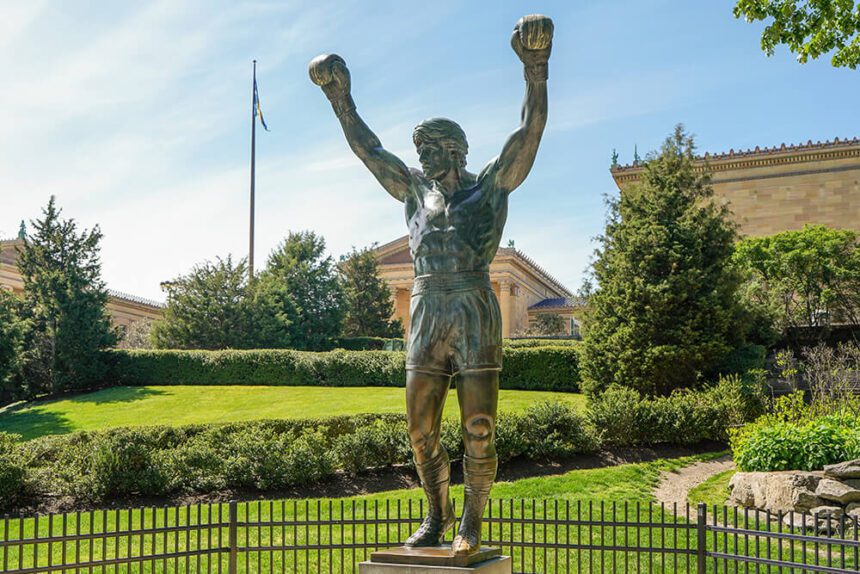
Rocky Statue. Photo by K. Huff for PHLCVB.
City of Murals
Thousands of colorful murals can be found throughout Philadelphia thanks to Mural Arts Philadelphia, the nation’s largest public art program. The initiative began in 1984 and has grown from a simple beautification project to an internationally recognized art program. Up to 100 new artworks are created each year.
Some of the more famous murals include “Folding the Prism,” a nod to the Spring Garden neighborhood’s history of textile production. “Wide Open” has multiple Philadelphia themes, including brotherly love, skateboarding, and music. “Our Flag Unfurled” is a massive depiction of the American flag, created in the wake of the 9/11 attacks in 2001. The 6,000-square-foot mural is now one of the program’s most visible works of art, located just north of Center City, between I-95 and the Benjamin Franklin Bridge.
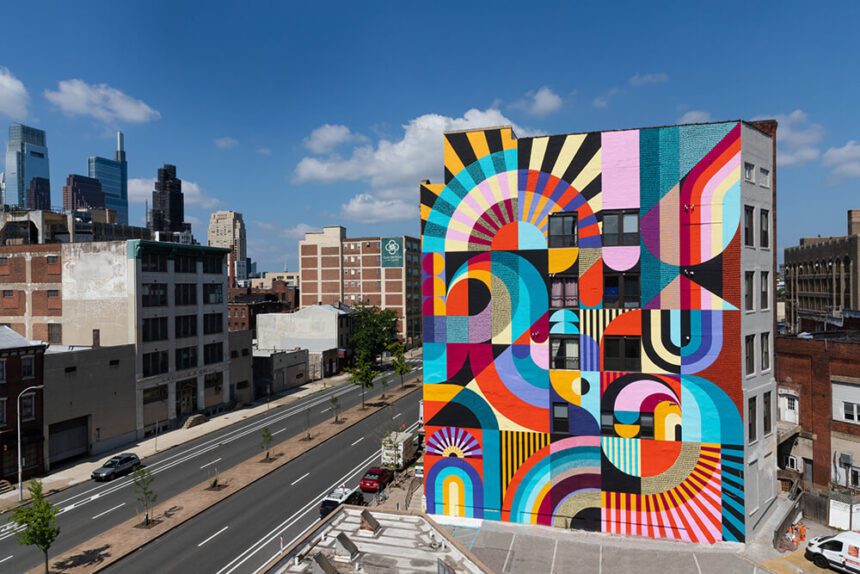
Folding the Prism © 2019 Mural Arts Philadelphia / Jessie Unterhalter & Katey Truhn (Jessie & Katey), 1217 Spring Garden Street. Photo by Steve Weinik.
Art Tours
Explore the “Mural Capital of the World” by taking one of Mural Arts Philadelphia’s guided public art tours. Or take a free self-guided tour using the guide available on the organization’s website.
The Association for Public Art (aPA) offers multiple guides for visitors to use when touring Philadelphia’s outdoor art. Museum Without Walls: AUDIO is an interactive guide to sculptures in Center City and Fairmount Park.
The aPA also offers other guides that allow visitors to take themed tours, including topics like Black history, politics, and the animal kingdom. Fans of individual artists can also find information on where to find their works. Artists with multiple pieces of work around the city include the Calder family, Claes Oldenburg, and Paul Manship.
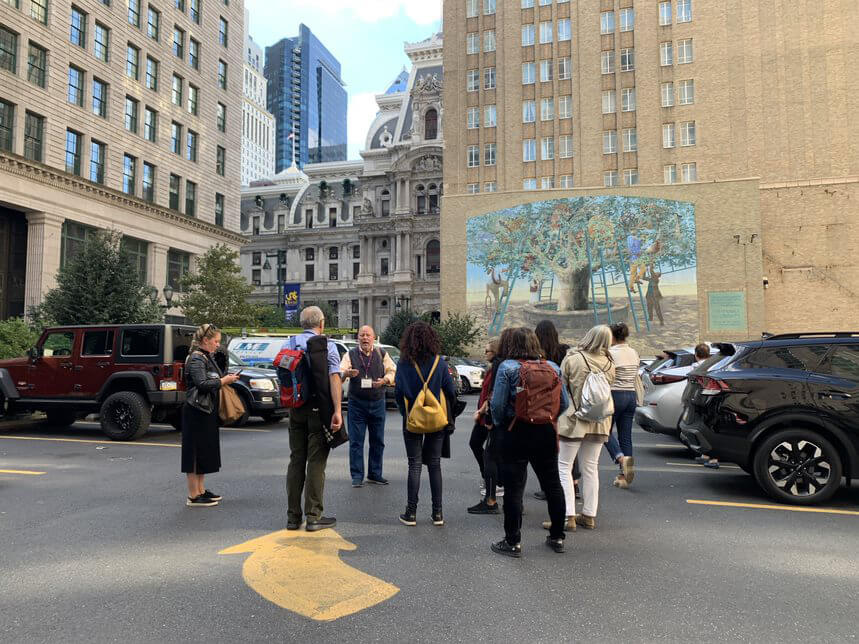
Mural Arts Tour. Photo by J. Ryan for PHLCVB.
Gallery on the Streets
It’s not hard to find art in Philadelphia thanks to the city’s vibrant, unofficial public arts scene. Immerse yourself in a glittering garden of mosaics at Philadelphia’s Magic Gardens on South Street. This three-block museum/installation is a mesmerizing maze covered with mosaics. Half indoor and half outdoor, this unique space is not your typical garden. The space is filled with unexpected items, including mirrors, bottles, and bicycle wheels, all held together by colorful grout.
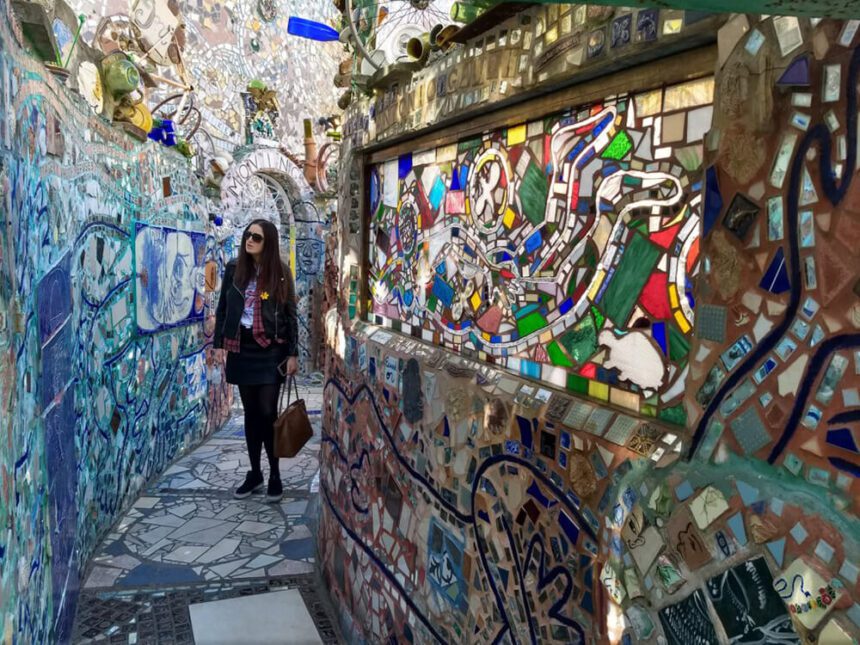
Philadelphia’s Magic Gardens. Photo by R. Bloom for PHLCVB.
Other unexpected art forms abound. Yarn bombing (also known as yarn storming or graffiti knitting) brings bursts of color to tree trunks, benches, and street signs with handcrafted crochet wraps—often meant to share a message.
Keep an eye out for linoleum plaques embedded in certain stretches of sidewalk. These plaques are called Toynbee tiles. The mystery that surrounds these tiles became an international obsession after they began popping up in cities across the U.S.
Wheatpasting is another popular street art form in Philadelphia. This is the practice of creating posters and affixing them to public spots including mailboxes, trash cans, construction sites, and light poles.
Planning a visit? Discover Philadelphia’s creative side and start your art-filled adventure today.
